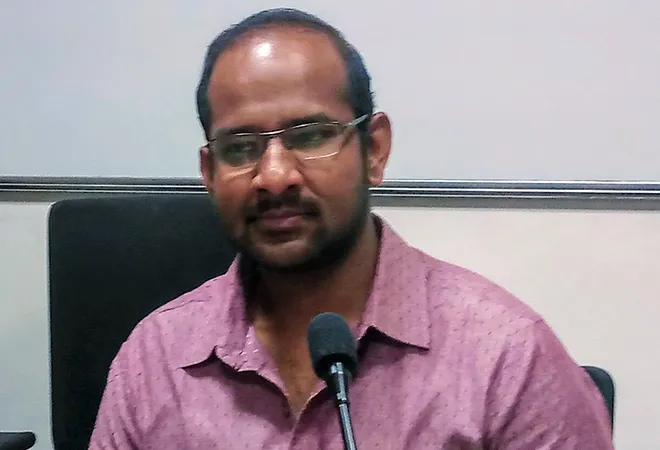“Despite aging armaments and ordnance, Indian Air Force (IAF) is tuned to fight a war and win it in any situation,” according to Air Marshal Simhakutty Varthaman (retd), formerly Air Officer Commanding-in-Chief (AOC-in-C), Eastern Air Command. Initiating an interaction on “Air defence of the nation” at Observer Research Foundation, Chennai, on 1 December 2018, AM Varthaman said that air-power was a very destructive medium, yet, protecting the nation’s skies from every threat was the primary goal of any air force and to do so, all pitfalls should have to be addressed.
In the Indian context, the IAF, established in 1932, was the game-changer in every war since Independence, both in defensive and offensive roles. The ‘Union War Book’, inherited from the British and updated and altered from time to time, put the onus of defending the country’s airspace squarely on the IAF, Air Marshal Varthaman said.
Having defined the existing and emerging threats from the air, both from state players and non-state actors, the nation has networked all its radars and synchronised them, for a full coverage from above. In addition to conventional ground radars, small, medium and big, air-borne warning and control systems (AWACS) and aerostats as force- multipliers, to minimise threats and offensive operations, where possible.
Establishing point defence with mobile capability on vital areas and layers of defence are wound systematically, weapons operating from smaller to larger radii are linked into the system. IAF’s Command, Control, Communications, Computers, Intelligence, Surveillance and Reconnaissance (C4ISR) system, built by public sector Bharat Electronics Limited (BEL).
Going by the name ‘Integrated Air Command Control System’ (IACCS), it has helped integrate both tri-Services and commercial networks, as demonstrated by ‘Gagan Shakti-2018’ exercises, Air Marshal Varthaman explained. He said that India would need ‘black cable’ channels, as in the US, for exclusive military transmissions and net-working.
Future of air defence
The biggest problem facing the IAF was aging aircraft and weapons. Though we could also beat an adversary any time, there was need to update and upgrade the dwindling number of fighter squadrons and also weapons systems, Air Marshal Varthaman said. Recent technologies like drones would be a serious threat in the air, both in terms of individual size and also numbers. In context, he said that the IAF would soon have fifth-generation stealth capability.
Air Marshal Varthaman said that at the end of the day, the man made the difference between victory and defeat in any war. He also mentioned that the organisational structure of the Defence Ministry and also attendant politics at different times delayed procurements beyond reasonable time-limits. In context, he added that there was the need to create the post of a “Chief of Defence Staff” (CDS), to coordinate not only war-efforts but also with the civilian administration, which comprised the political and bureaucratic leaderships.
This report is prepared by S Sivanesan, Associate, Observer Research Foundation, Chennai
The views expressed above belong to the author(s). ORF research and analyses now available on Telegram! Click here to access our curated content — blogs, longforms and interviews.




 PREV
PREV

